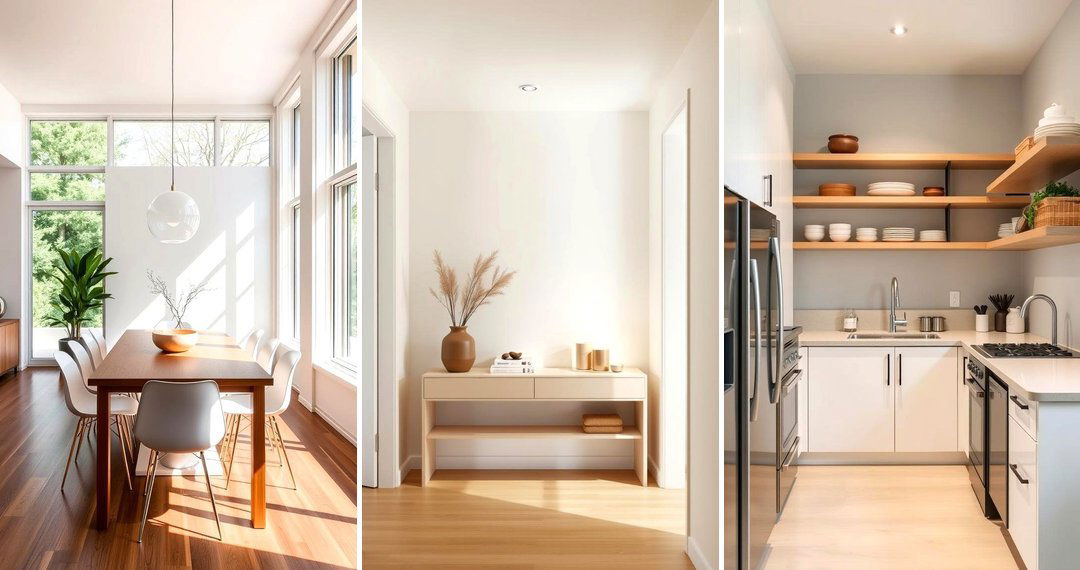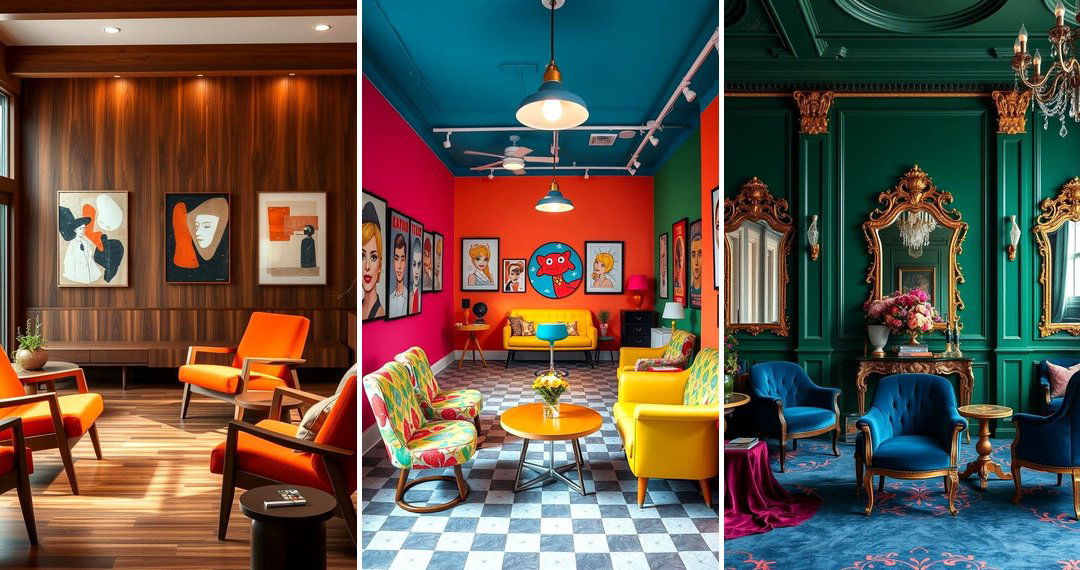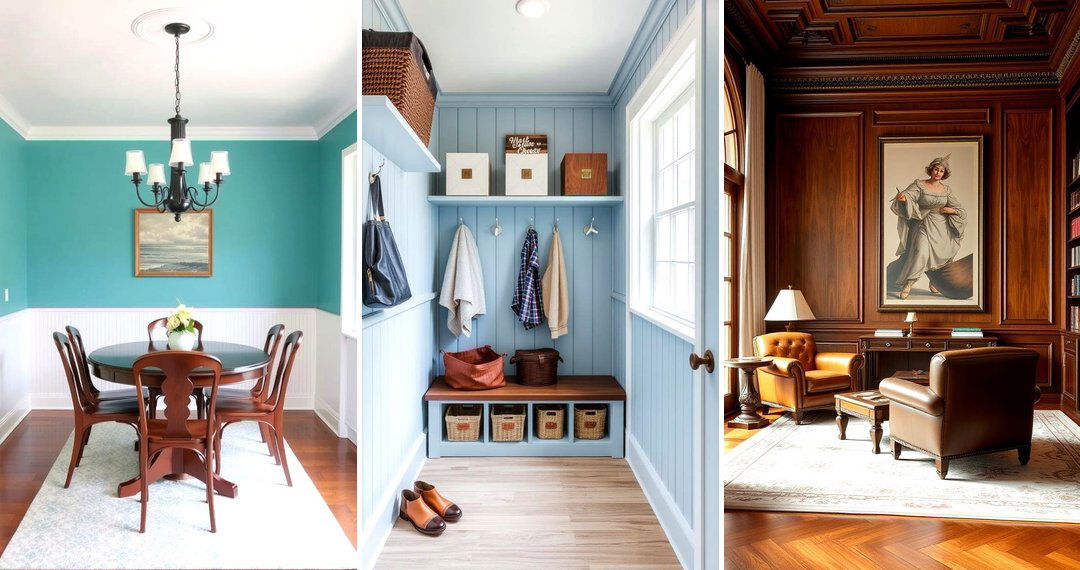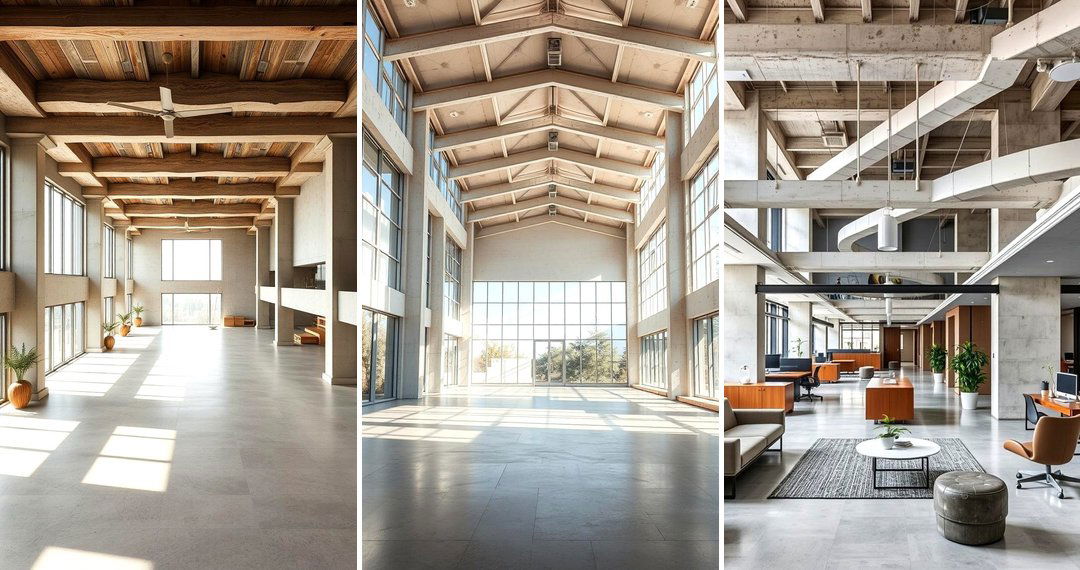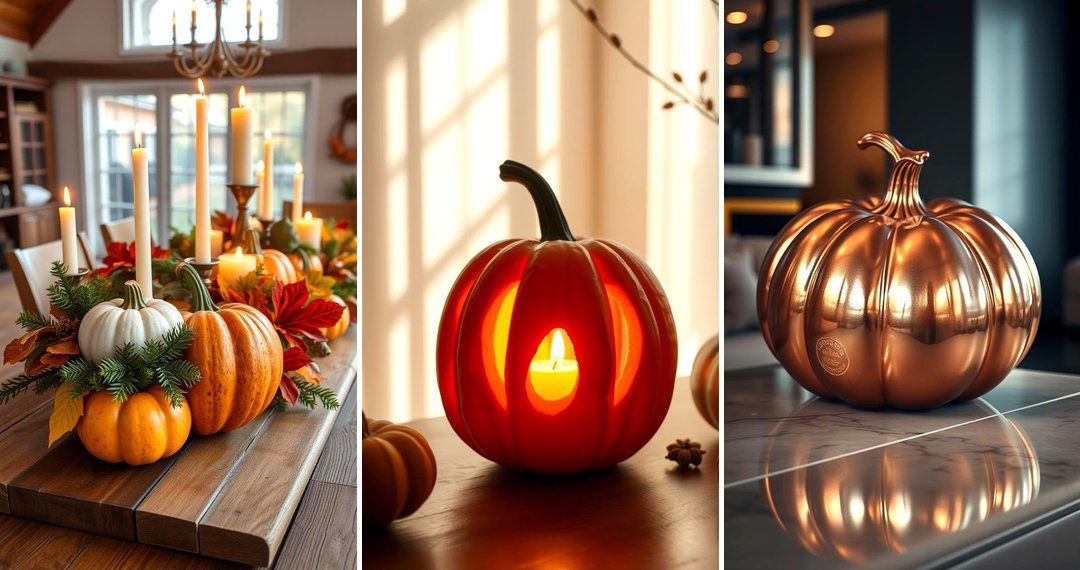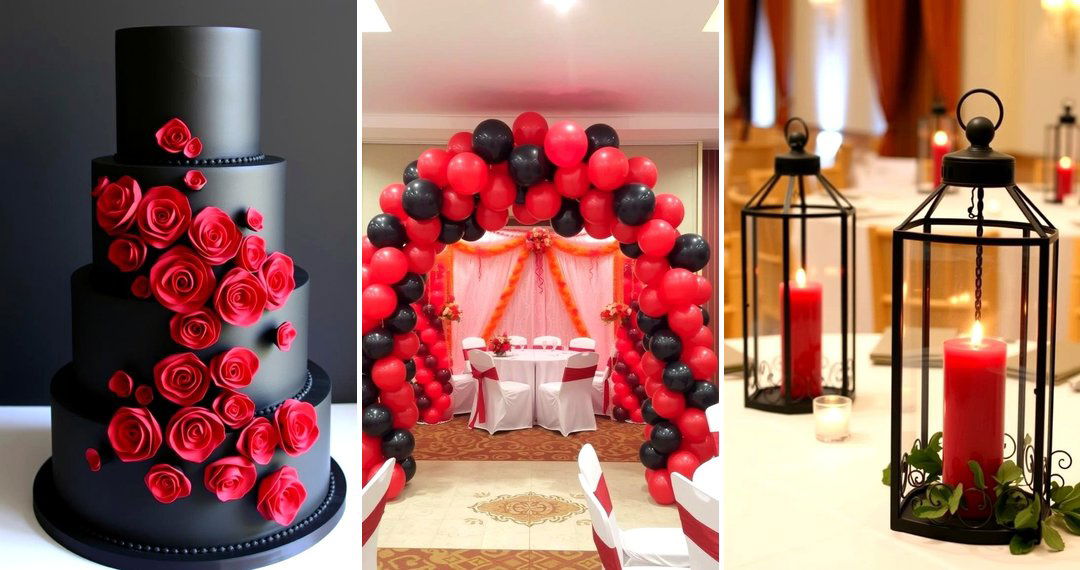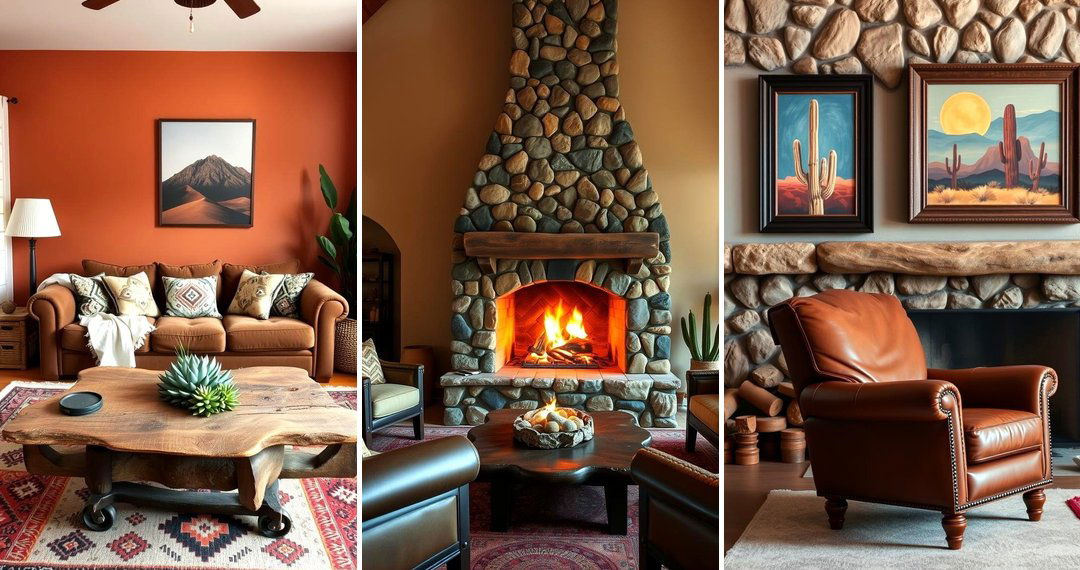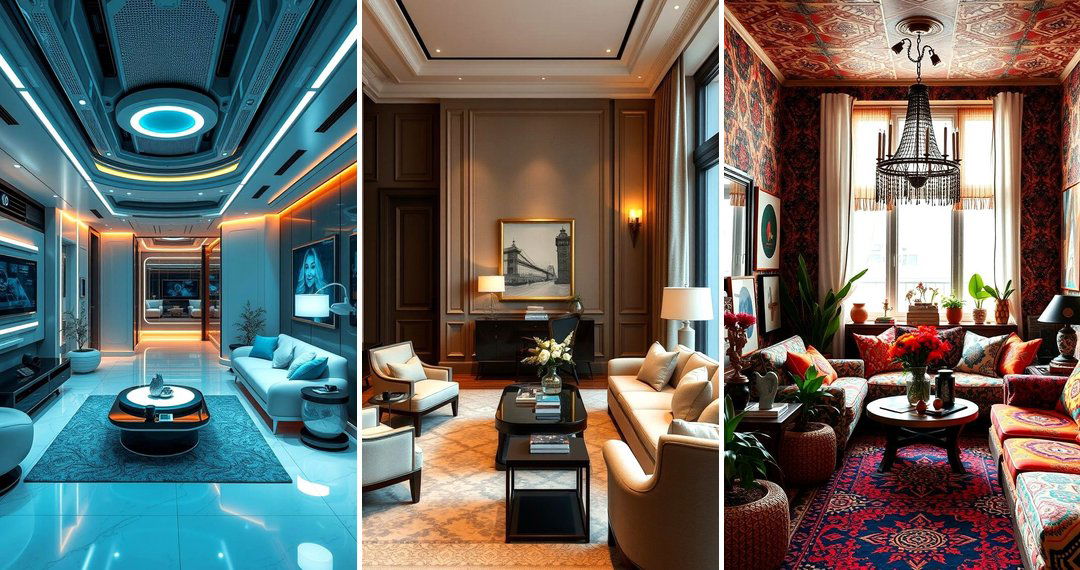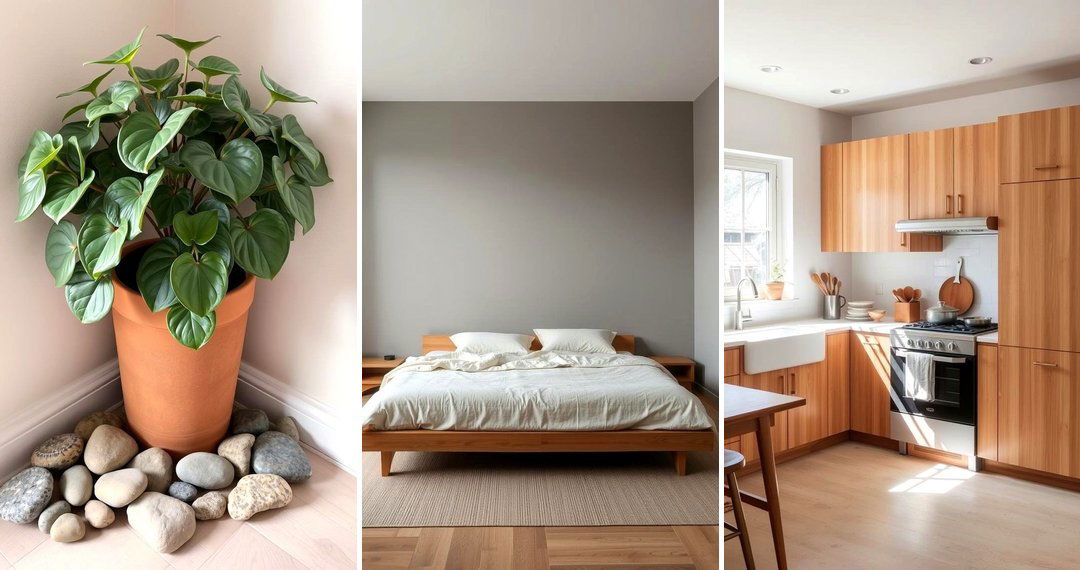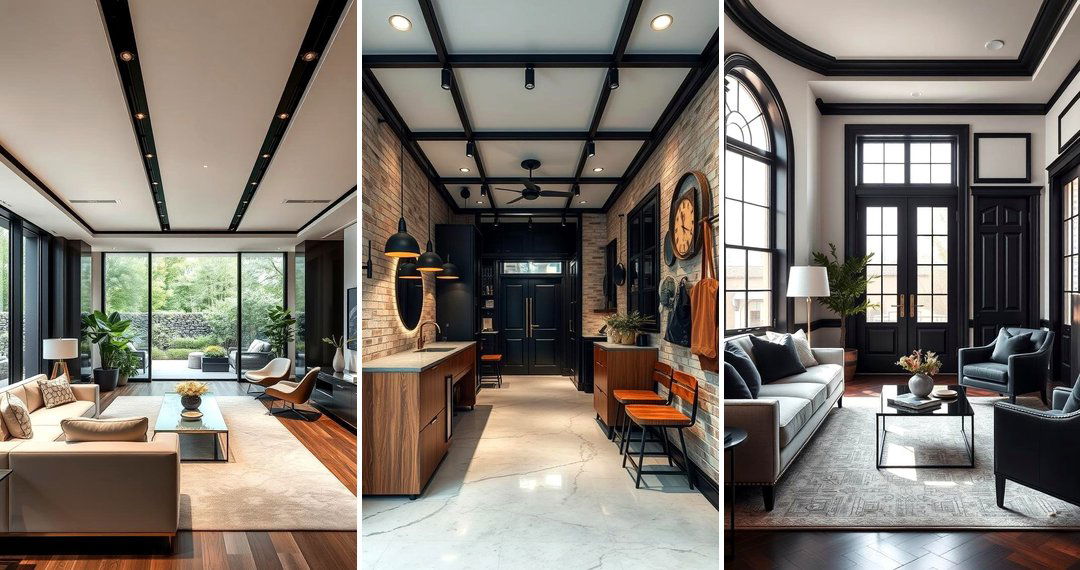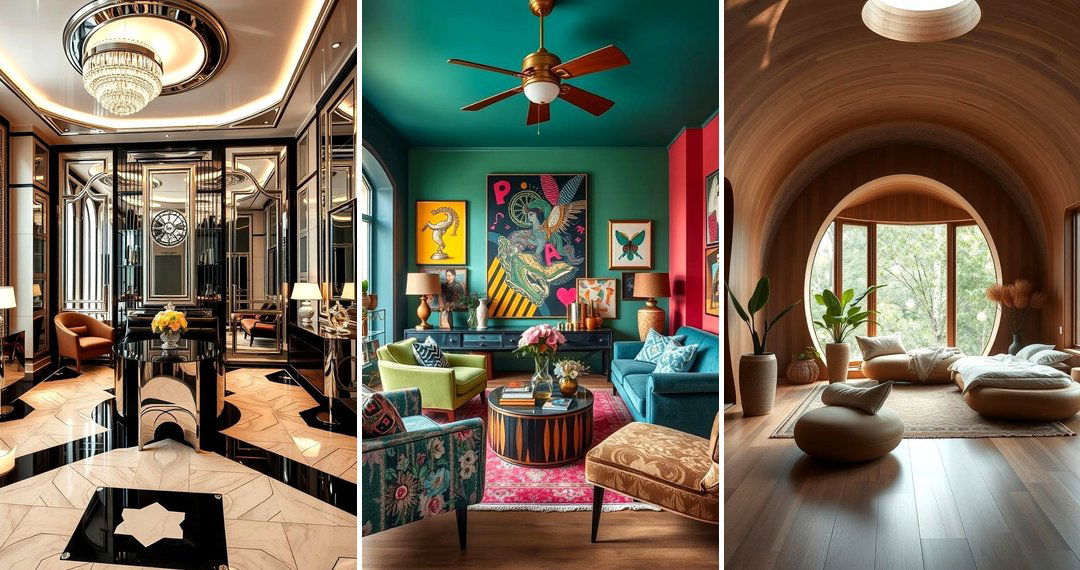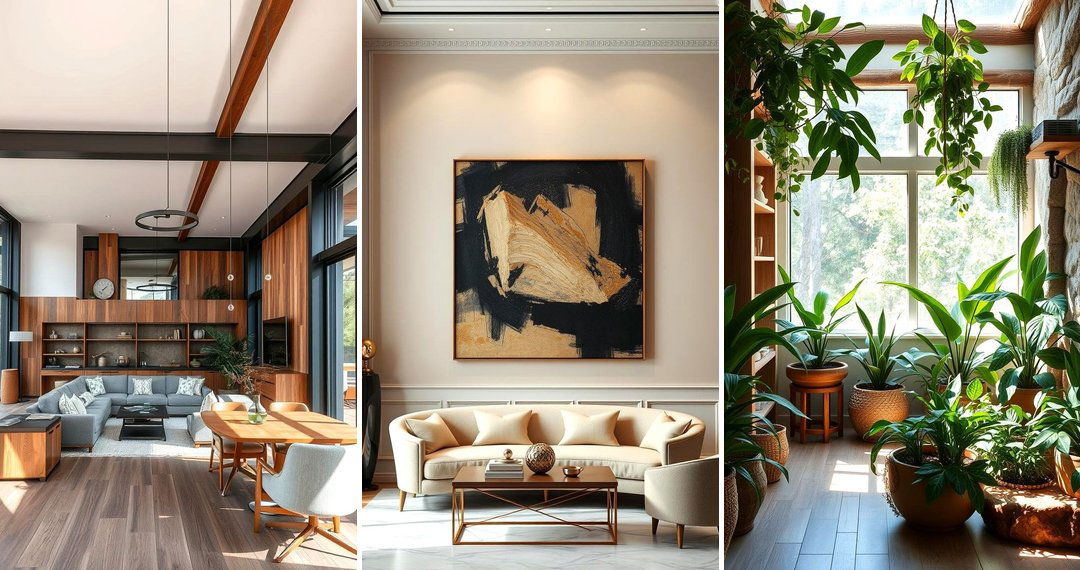Introduction
Bauhaus design revolutionized the way we approach interiors, blending form and function into striking, minimalist spaces. Known for its clean lines, geometric shapes, and practical elegance, this style focuses on using materials in innovative ways while prioritizing simplicity and functionality. Whether you’re designing a home or an office, incorporating Bauhaus elements can help create a space that feels both modern and timeless. From the use of primary colors to furniture that doubles as art, this approach encourages creativity without compromising on usability. Let’s dive into 24 Bauhaus interior design ideas that can transform your space.

1. Geometric Furniture Shapes
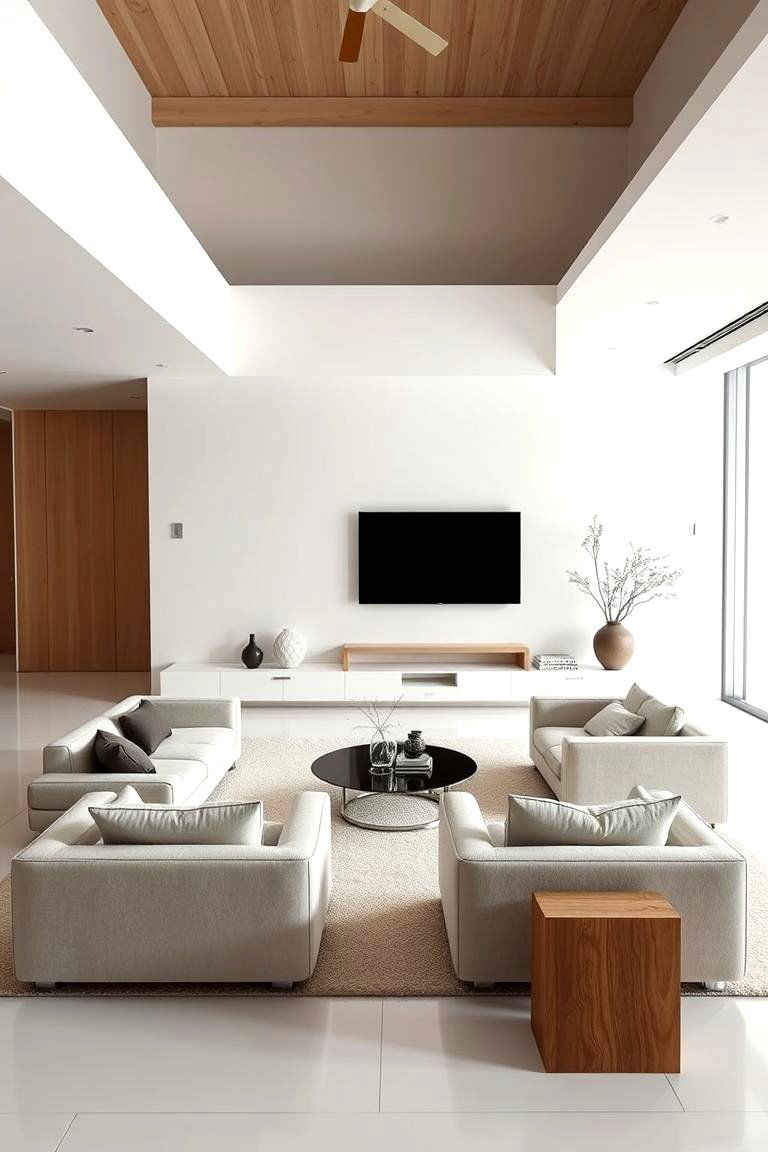
Incorporating geometric shapes into your furniture pieces can create a bold, visually striking look. These simple yet sophisticated shapes—such as circles, squares, and triangles—are the hallmark of Bauhaus design. Using them in furniture, like tables and chairs, adds an element of modernity without clutter. Not only does this approach look aesthetically pleasing, but it also helps maintain clean lines and open spaces, which are essential for any functional design.
2. Minimalist Color Palette
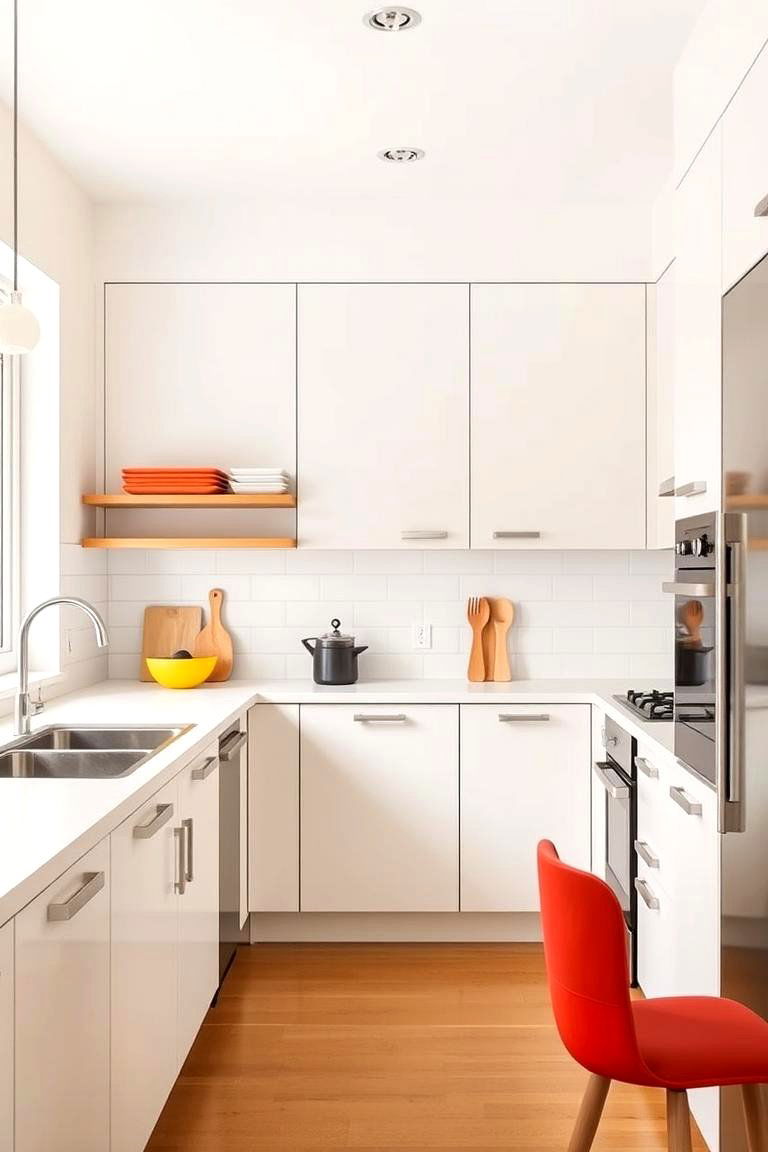
Bauhaus interiors are known for their restrained color palettes. A minimalist color scheme focuses on neutral tones—such as white, black, gray, and beige—with accent colors in primary hues like red, blue, and yellow. This allows the design to feel sleek and cohesive while introducing just enough vibrancy to keep the space interesting. The simplicity of the palette allows furniture and architecture to take center stage without overwhelming the eyes.
3. Open Floor Plans
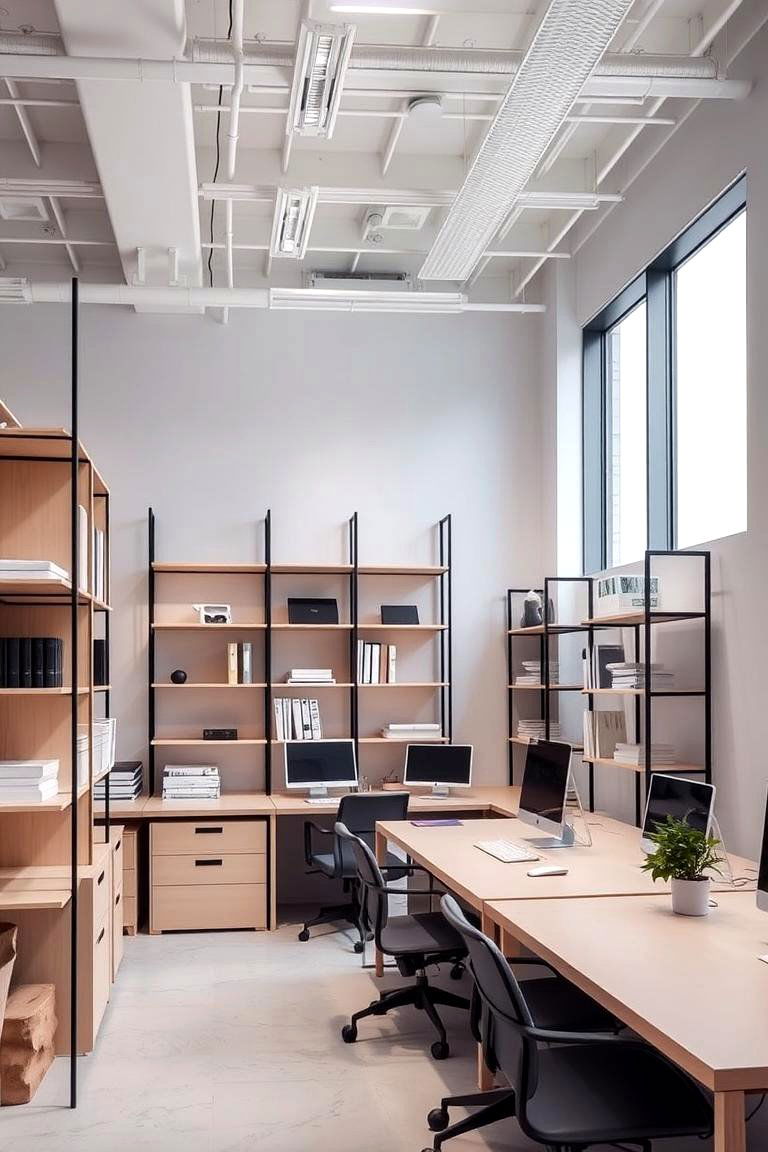
The open floor plan is a key feature of Bauhaus design, allowing for fluidity and movement within a space. By eliminating unnecessary walls and partitions, the flow between different areas becomes seamless. This approach also emphasizes functional zones within a room, such as clearly defined seating or dining areas, which can be achieved with minimalist furniture that doesn't clutter the space. Open plans create a sense of airiness and freedom in smaller homes or apartments.
4. Functional Yet Artistic Lighting

Bauhaus lighting fixtures are more than just functional; they also serve as pieces of art. Think of sleek, streamlined pendant lights, floor lamps with simple geometric bases, or bold statement lighting designs. These lighting pieces are designed to illuminate a space effectively, but they also contribute to the overall aesthetic, offering sculptural beauty that complements the design. Whether it's a modern chandelier or a wall-mounted sconce, the key is simplicity and effectiveness.
5. Bold Use of Primary Colors
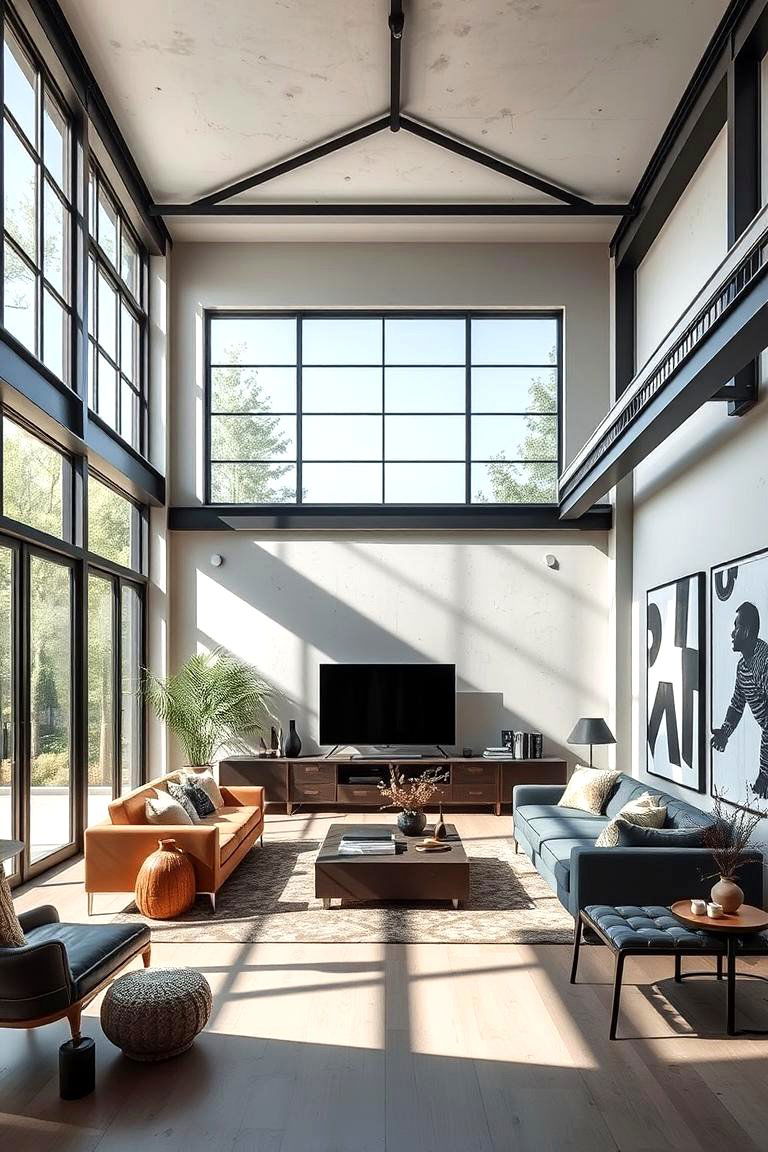
Primary colors—red, blue, and yellow—are iconic in Bauhaus design and are often used in unexpected ways. Whether applied to furniture, accent walls, or textiles, these bright, vivid colors add a playful yet sophisticated touch to the space. They can be used sparingly, such as in a brightly colored chair or rug, to create focal points or to emphasize specific areas of the room. This strategic use of color can inject energy into a minimalist design.
6. Industrial Materials
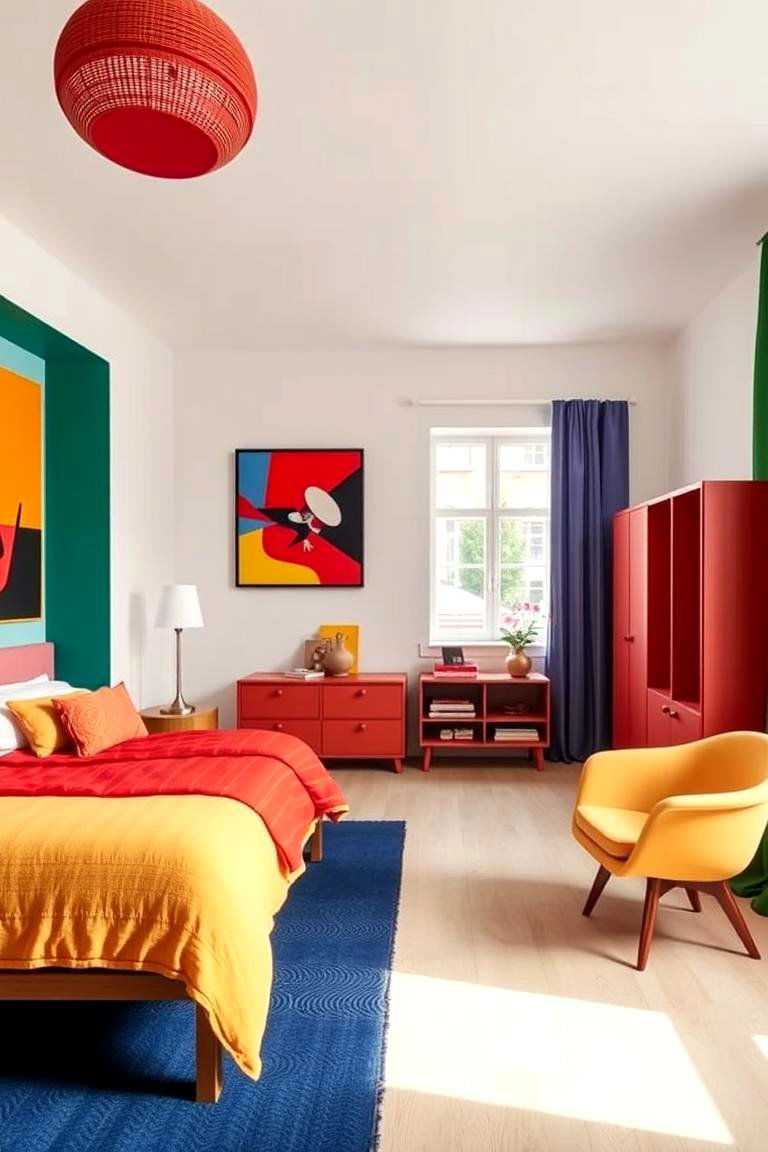
Bauhaus designers embraced the use of industrial materials such as steel, concrete, and glass. These materials are not just functional; they contribute to the minimalist aesthetic, giving the space a clean, urban feel. Steel frames on furniture, concrete flooring, and large glass windows can create a sleek and modern atmosphere. This industrial touch, paired with minimalist décor, brings an industrial-chic vibe that’s both contemporary and timeless.
7. Modular Furniture
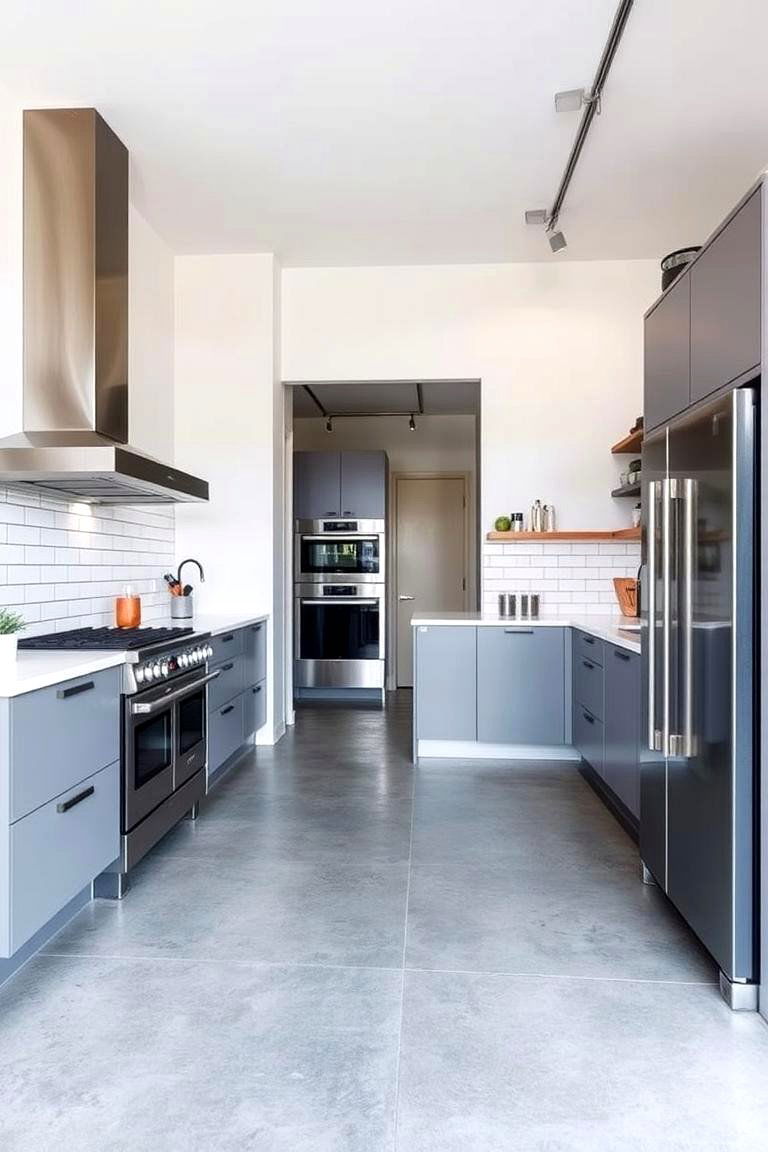
Bauhaus interiors often feature modular furniture pieces, allowing for adaptability and customization. This practical approach to furniture design means that elements like shelving units, seating, and storage can be rearranged or expanded to suit changing needs. Modular furniture provides flexibility for growing families or small spaces, ensuring that your design adapts to your lifestyle without sacrificing style or functionality.
8. Abstract Wall Art

Art in the Bauhaus style tends to be bold, abstract, and geometric. Incorporating abstract wall art into your space adds visual interest while staying true to the minimalist aesthetic. These art pieces typically use primary colors, straight lines, and geometric patterns to evoke a sense of balance and harmony. Whether it's a large canvas painting or a series of smaller framed works, abstract art can add personality to your walls without overwhelming the space.
9. Functional Open Shelving
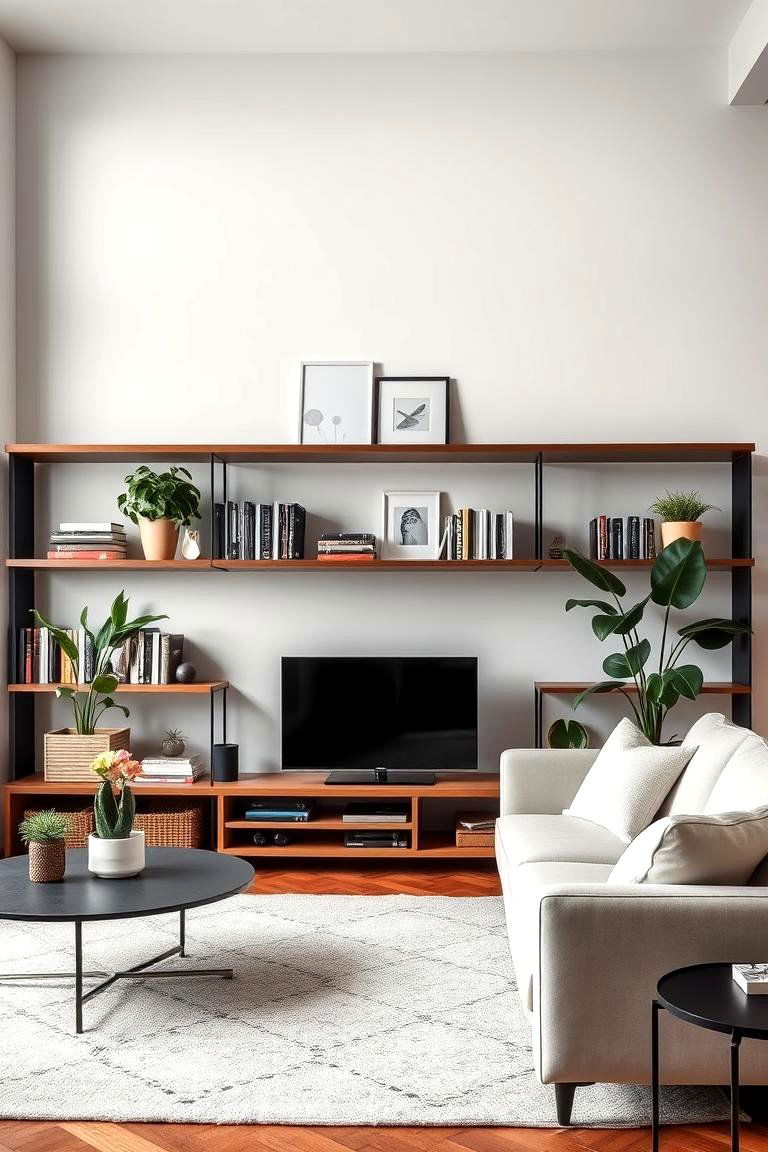
Open shelving is another functional element commonly used in Bauhaus design. Unlike traditional cabinets with doors, open shelves offer easy access to everyday items and allow for a more open, airy look. When arranged carefully, open shelving can also act as a display for books, vases, or unique decorative pieces. This clean, uncluttered approach encourages you to keep only the essentials, aligning with the overall minimalist aesthetic of Bauhaus interiors.
10. Multi-Functional Furniture
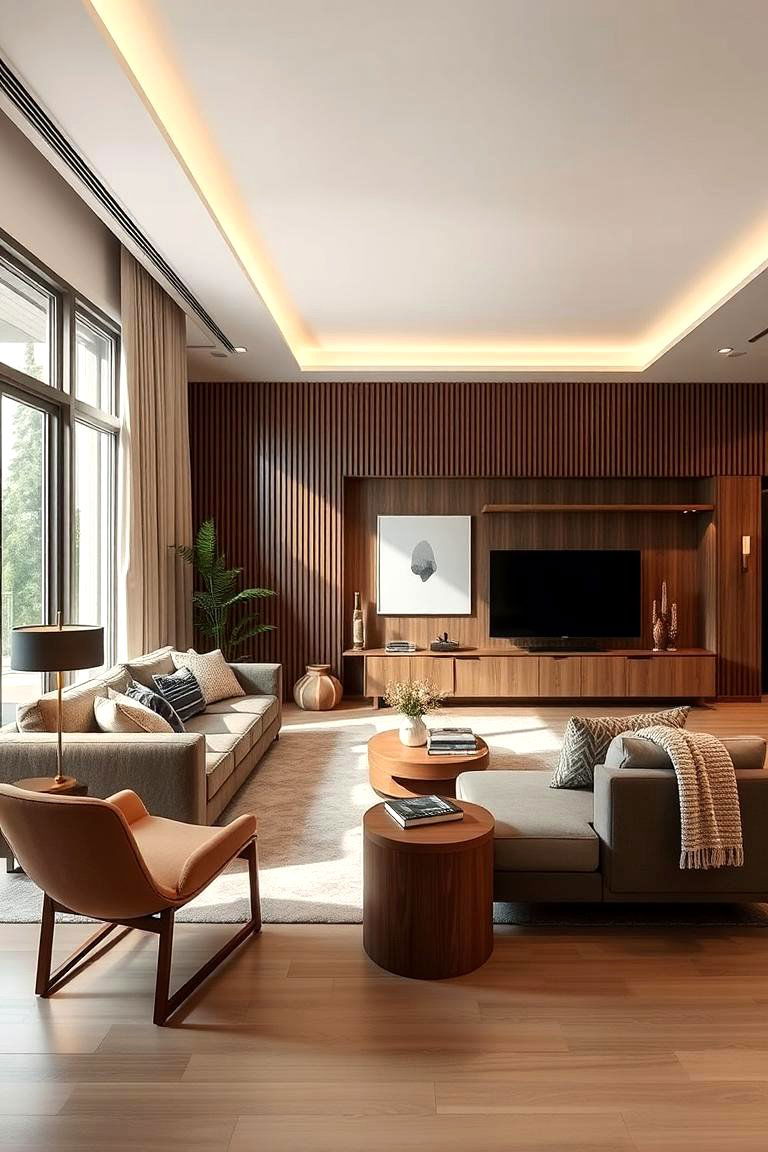
In Bauhaus interiors, furniture often serves more than one purpose. For instance, a sofa might also be a bed, or a coffee table could double as a desk. This versatility is perfect for smaller spaces or homes where every square foot matters. By focusing on furniture that is both practical and stylish, you can make the most of your space while staying true to the sleek and functional Bauhaus design philosophy.
11. Open Concept Kitchens
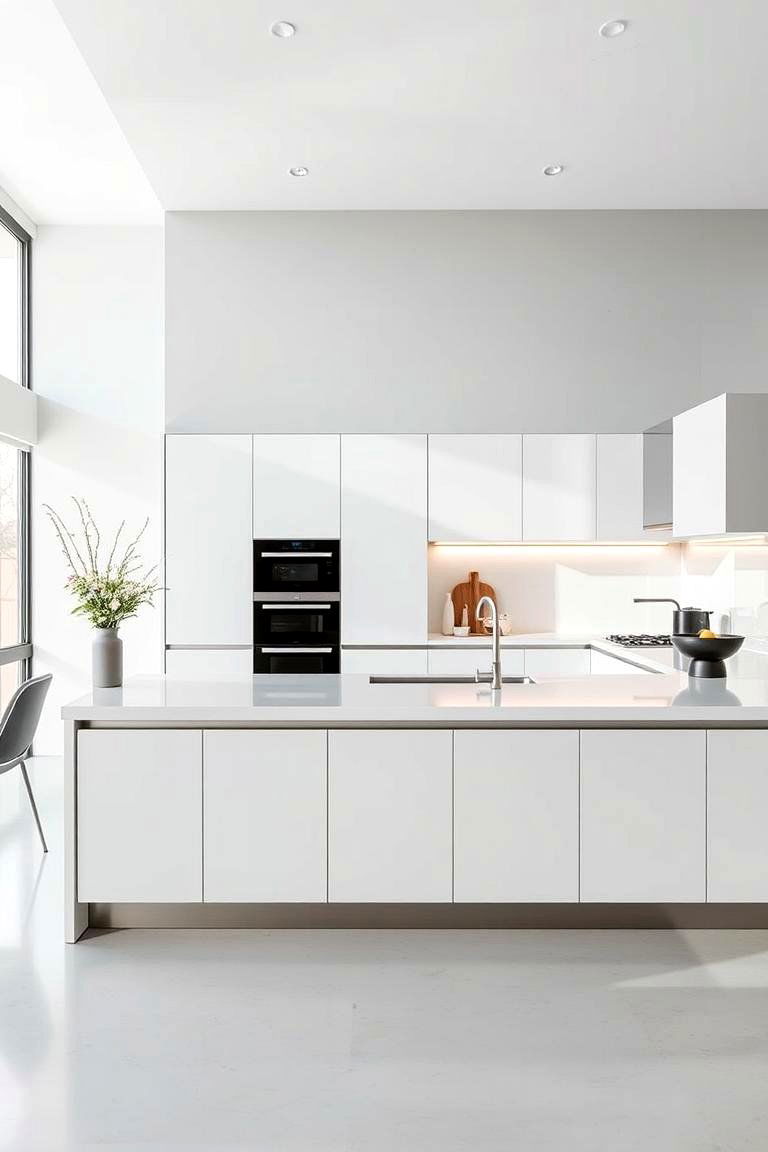
Open concept kitchens are perfect for a Bauhaus-inspired interior, blending functionality with modern aesthetics. This layout typically features minimalistic cabinetry, sleek countertops, and stainless steel appliances. By eliminating walls or barriers, the space feels larger and more inviting, while the clean design ensures that the kitchen remains as stylish as it is practical.
12. Neutral Floors with Bold Accents
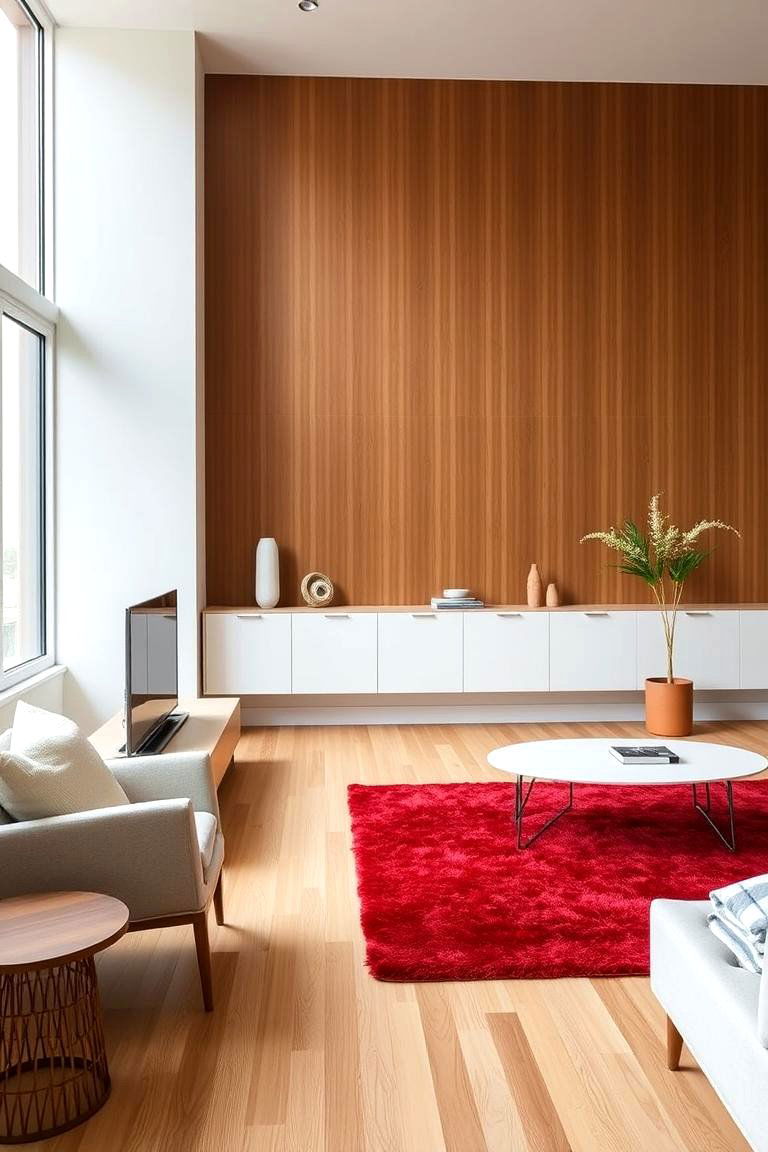
In Bauhaus interiors, the flooring often features neutral tones like wood, concrete, or polished stone, creating a calm foundation. To add energy to the space, bold accents can be introduced through rugs, textiles, or furniture in primary colors. This approach allows the room to maintain a grounded feel while still feeling dynamic and visually interesting.
13. Oversized Windows
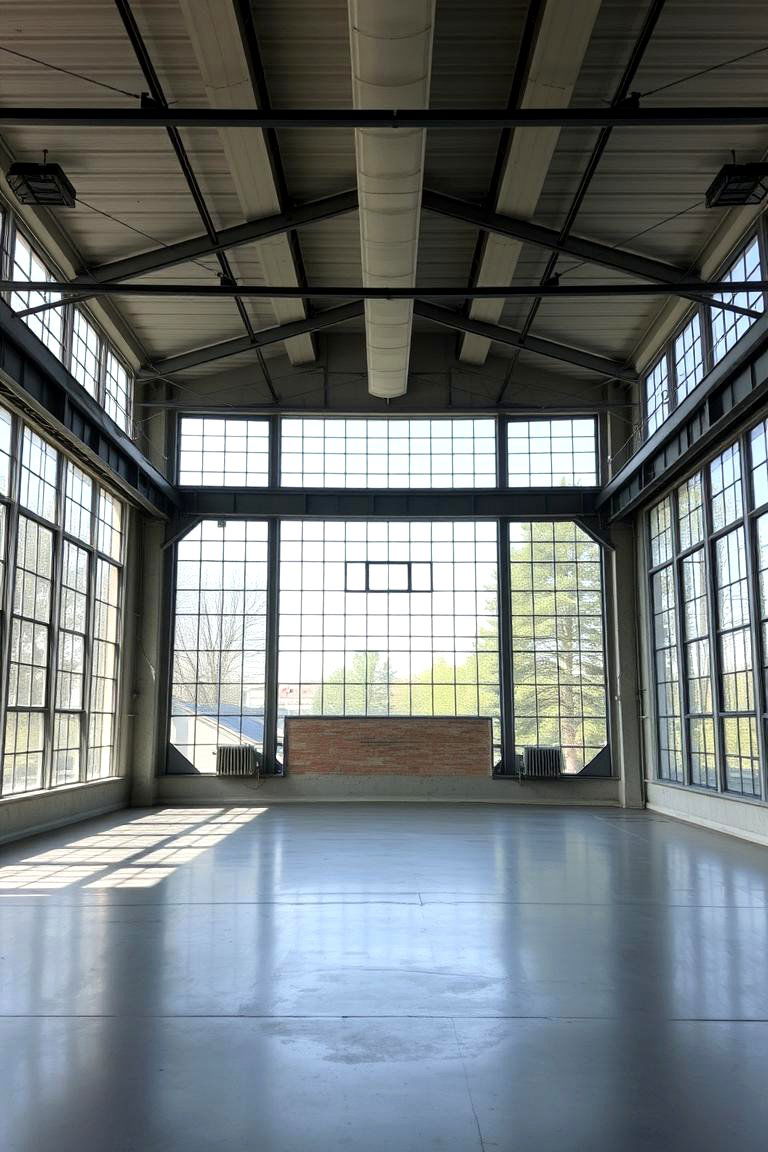
Large, expansive windows are a hallmark of Bauhaus architecture, and they play a key role in creating airy, light-filled interiors. These windows often feature minimal framing to enhance the open feel of the room. The natural light pouring through can transform any space, making it feel brighter and more inviting. Additionally, large windows offer beautiful views of the outside world, blurring the line between the interior and exterior.
14. Simple, Clean Lines
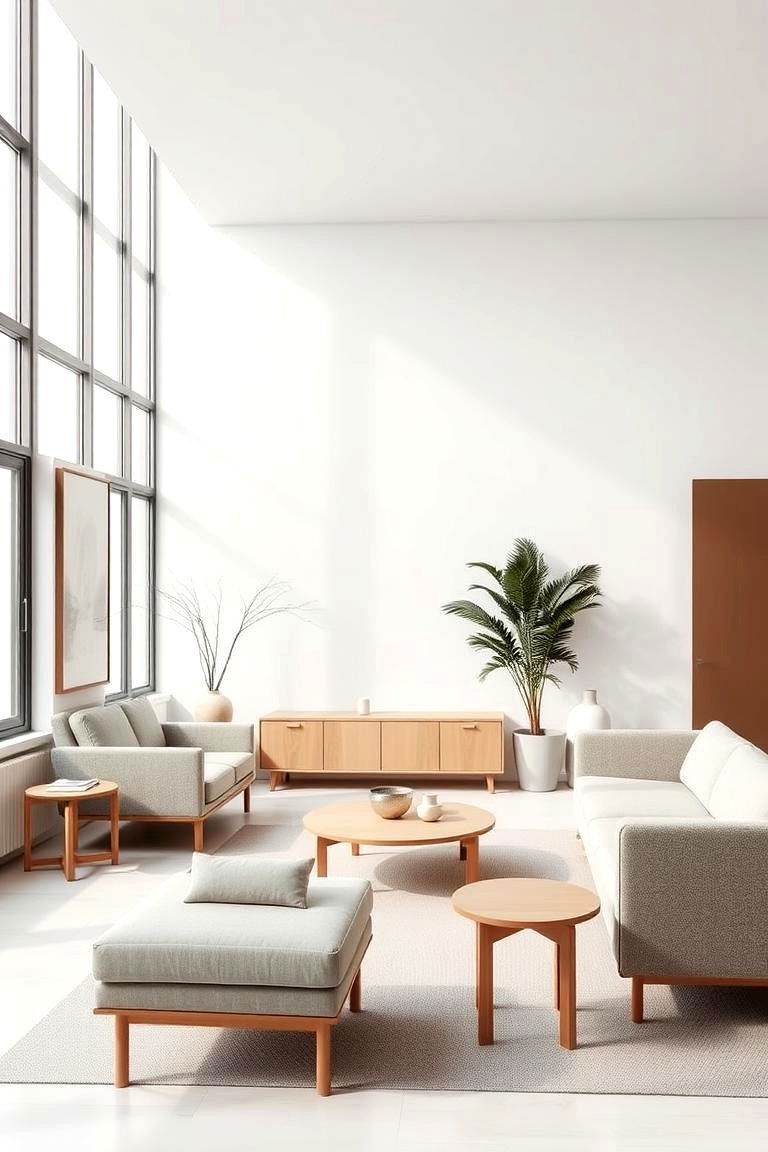
A defining characteristic of Bauhaus design is its use of simple, clean lines in both furniture and architecture. These straight, unembellished lines create a sense of order and harmony throughout the space. By avoiding intricate details or excess ornamentation, Bauhaus interiors focus on the beauty of the form itself, creating spaces that are aesthetically pleasing and functionally efficient.
15. Sculptural Furniture Pieces
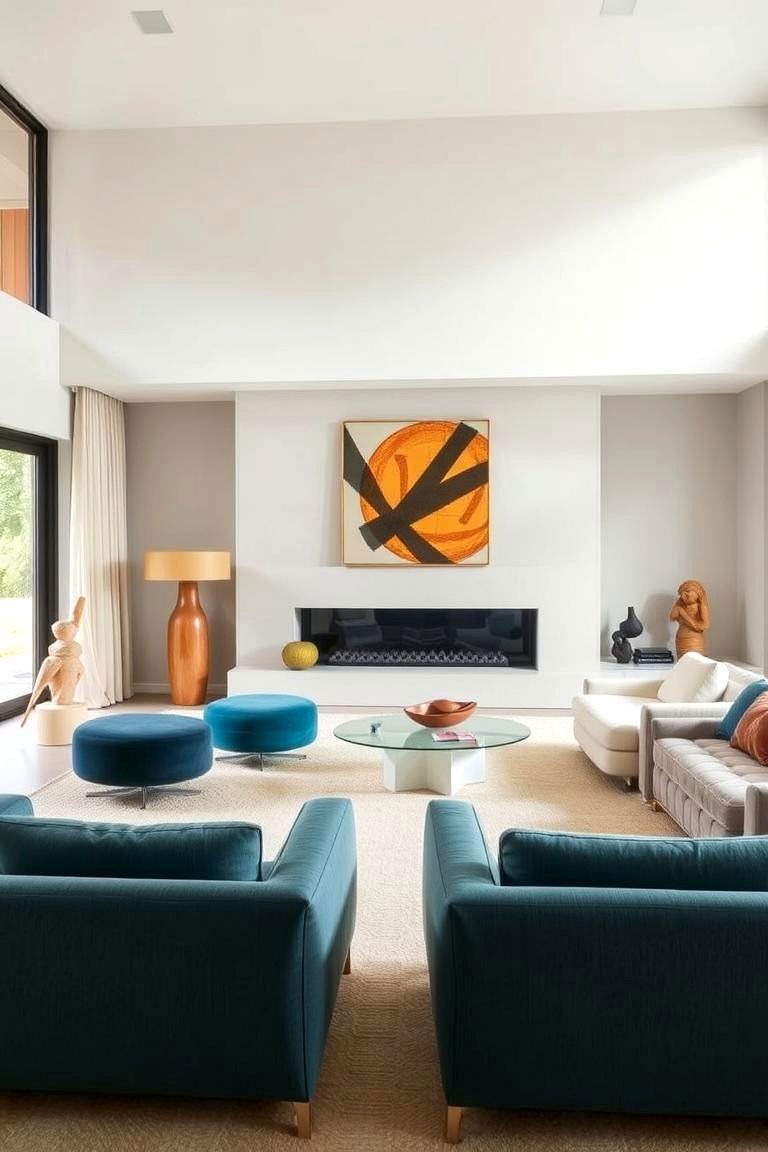
Bauhaus designers were masters at transforming everyday objects into sculptural works of art. Chairs, tables, and other furniture pieces are often designed with an artistic sensibility, featuring unique shapes, clean lines, and a minimalist aesthetic. These sculptural pieces act as functional art, enhancing the overall design while serving practical purposes.
16. Integration of Technology
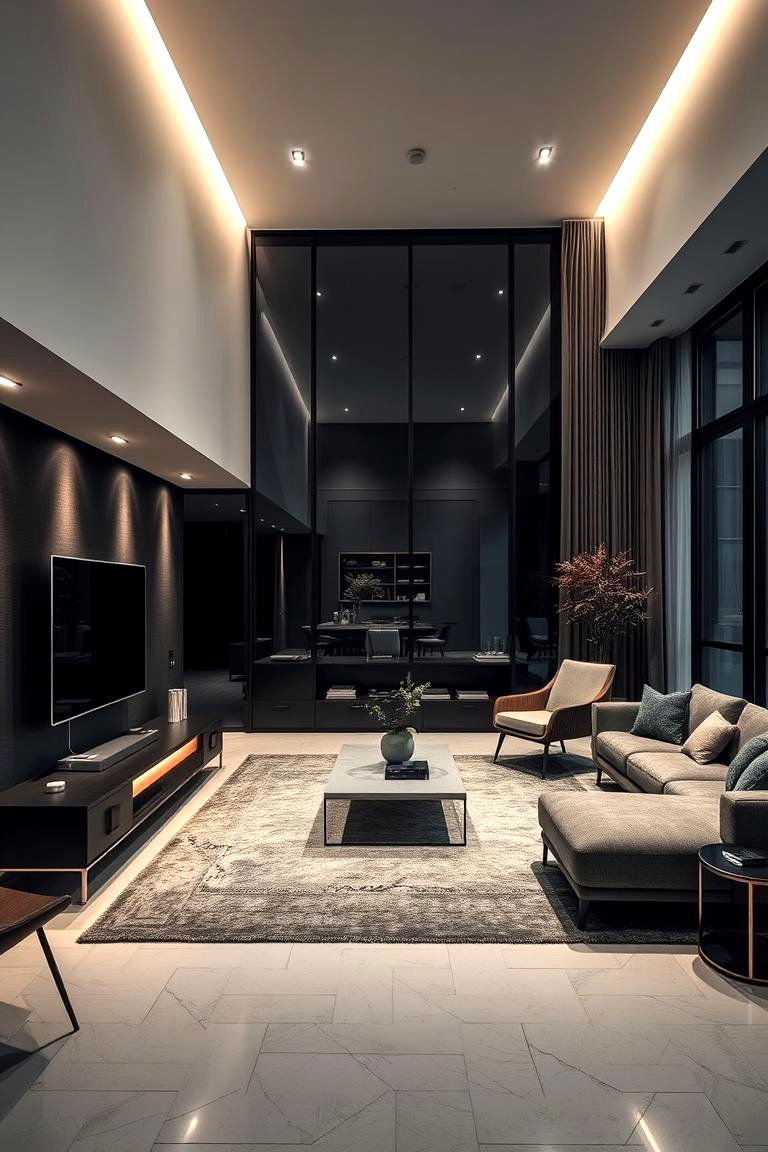
Technology was integrated into the Bauhaus movement as a means to streamline daily life while maintaining aesthetic purity. In a modern setting, this can translate to smart home features seamlessly blended into your design, such as voice-controlled lighting, hidden speakers, or automated temperature control. These technologies enhance the functionality of a space while maintaining the clean, minimalist aesthetic that Bauhaus is known for.
17. Black and White Contrast
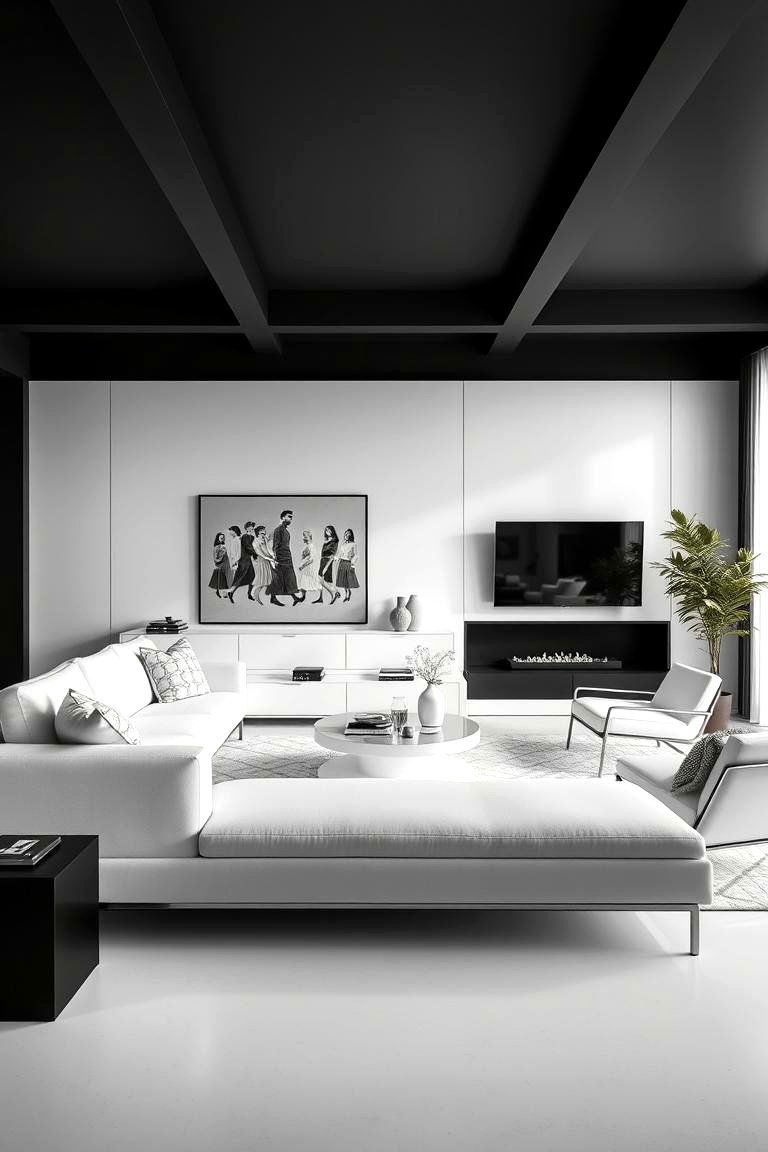
A classic black-and-white color scheme is a staple of Bauhaus interiors, creating a striking visual contrast that is both bold and elegant. This color combination enhances the geometric and minimalist elements of the design, allowing furniture and decor to stand out. Whether it’s in the form of contrasting wall colors, furniture pieces, or décor items, this monochromatic scheme can anchor the space and create a timeless look.
18. Functional Textiles
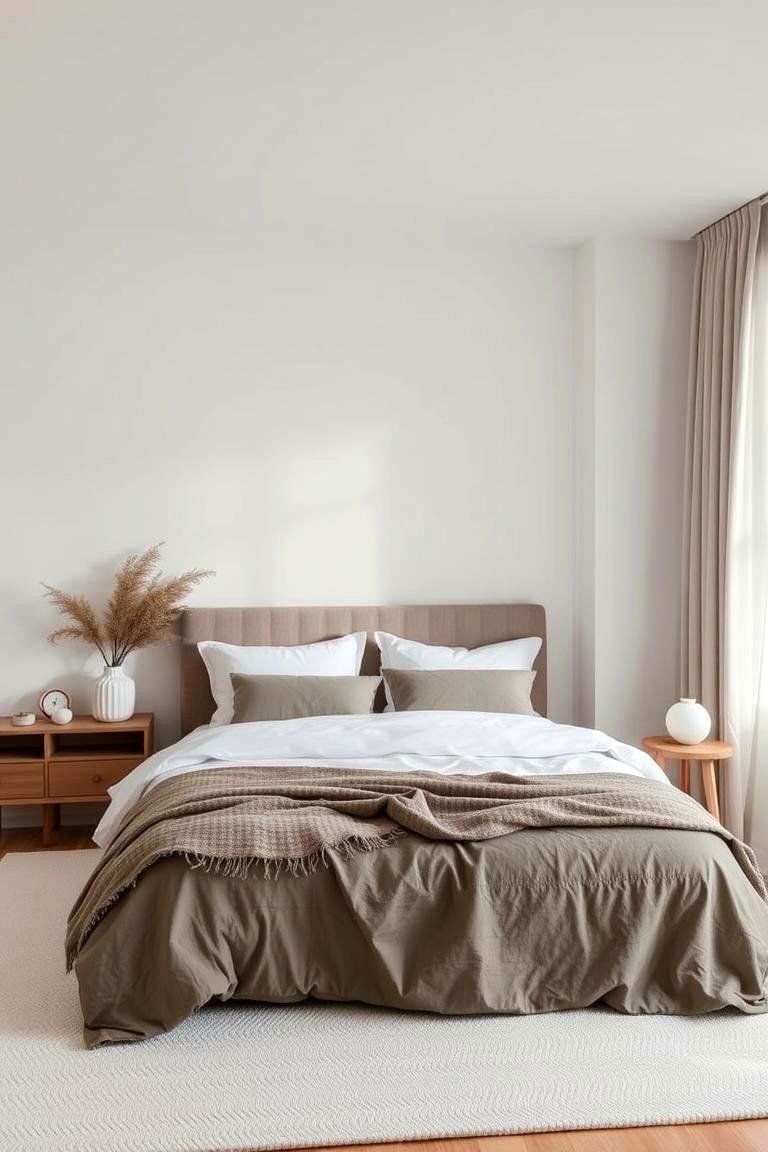
Textiles in Bauhaus design are selected for both form and function. Fabrics should be durable, simple, and practical, often in neutral shades or with subtle geometric patterns. These textiles can be used in furniture upholstery, curtains, or cushions, providing comfort while keeping with the overall minimalist aesthetic. The focus is on quality and simplicity, without the need for excessive decoration.
19. Natural Light as a Design Element

Natural light is a crucial design element in Bauhaus interiors. By maximizing the amount of natural light in a space—through expansive windows or strategically placed skylights—you can create an inviting and airy environment. Natural light enhances the overall aesthetic, reducing the need for artificial lighting and providing a connection to the outside world.
20. Flexible Space Dividers
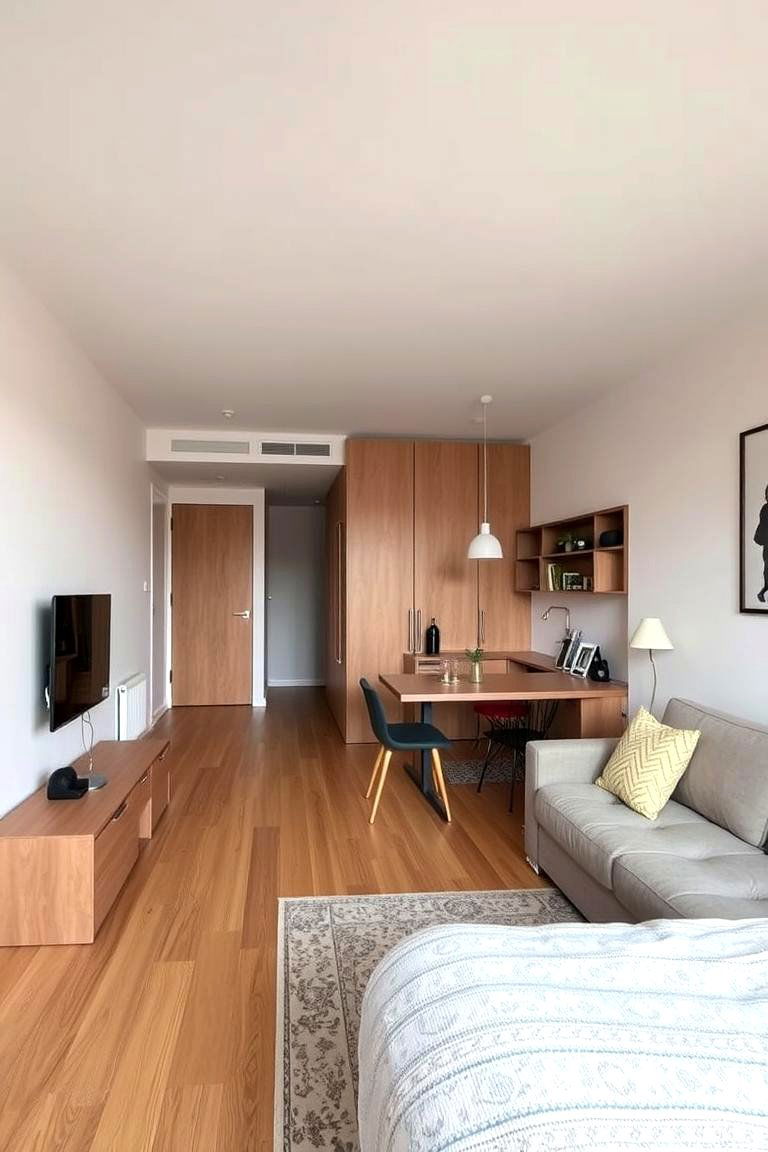
In a Bauhaus-inspired home, flexibility is key. Rather than using heavy walls or partitions to divide space, consider using moveable screens or furniture as flexible dividers. These can be easily rearranged to suit the changing needs of your space while maintaining the minimalist vibe. Such dividers allow you to adjust the layout of your room without compromising on light or openness.
21. Simple Textured Walls
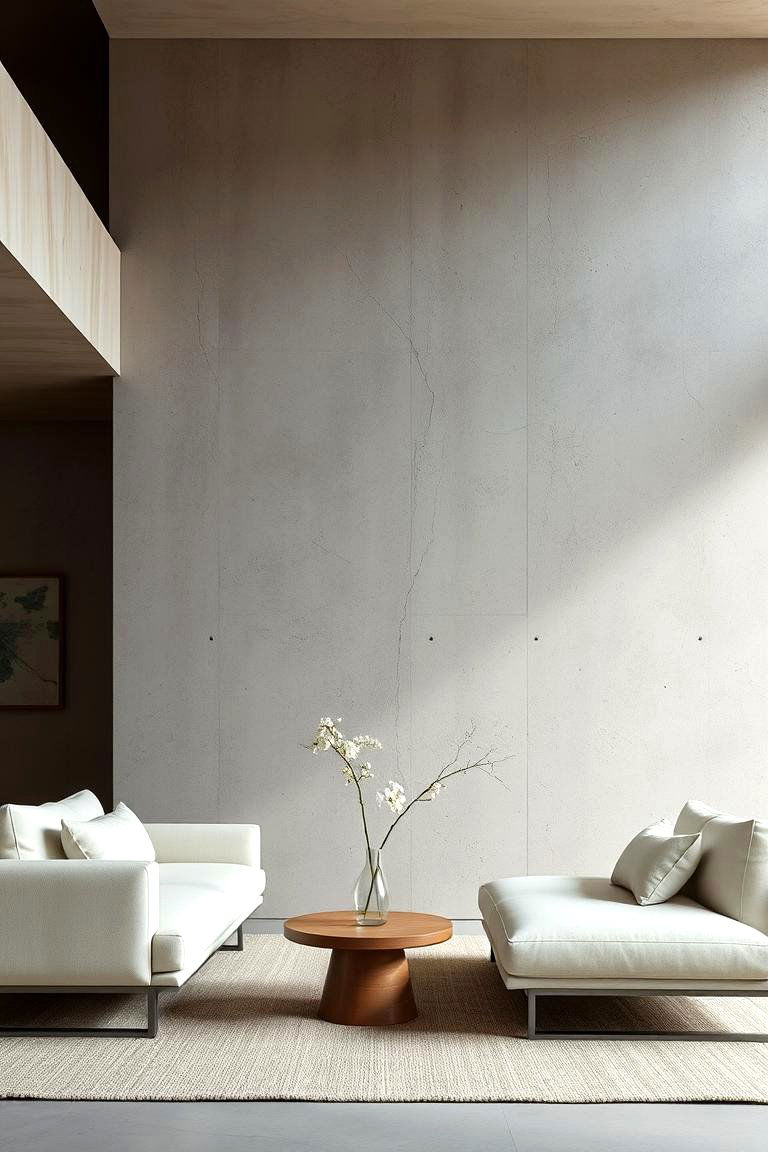
Bauhaus interiors often feature walls with subtle textures, such as concrete, plaster, or simple wood paneling. These textures add depth to the design without overwhelming the space. The focus remains on minimalism, with the texture providing a tactile contrast to the clean, straight lines of the furniture and architecture.
22. Industrial Accents in Décor

Adding industrial accents, such as metal shelves or exposed piping, can complement the Bauhaus design philosophy. These elements add an industrial-chic feel to the space, highlighting the raw, utilitarian beauty of the materials. Industrial décor items can create a visual contrast against the minimalist backdrop, making them stand out as artistic and functional pieces.
23. Streamlined Storage Solutions

Bauhaus design prioritizes organization and efficiency, and streamlined storage solutions are key. Built-in storage units, simple shelving systems, and minimalist cabinets help reduce clutter, ensuring the space remains clean and functional. These storage solutions are often hidden or integrated into the architecture, contributing to a more cohesive and minimalist aesthetic.
24. Timeless Furniture Designs
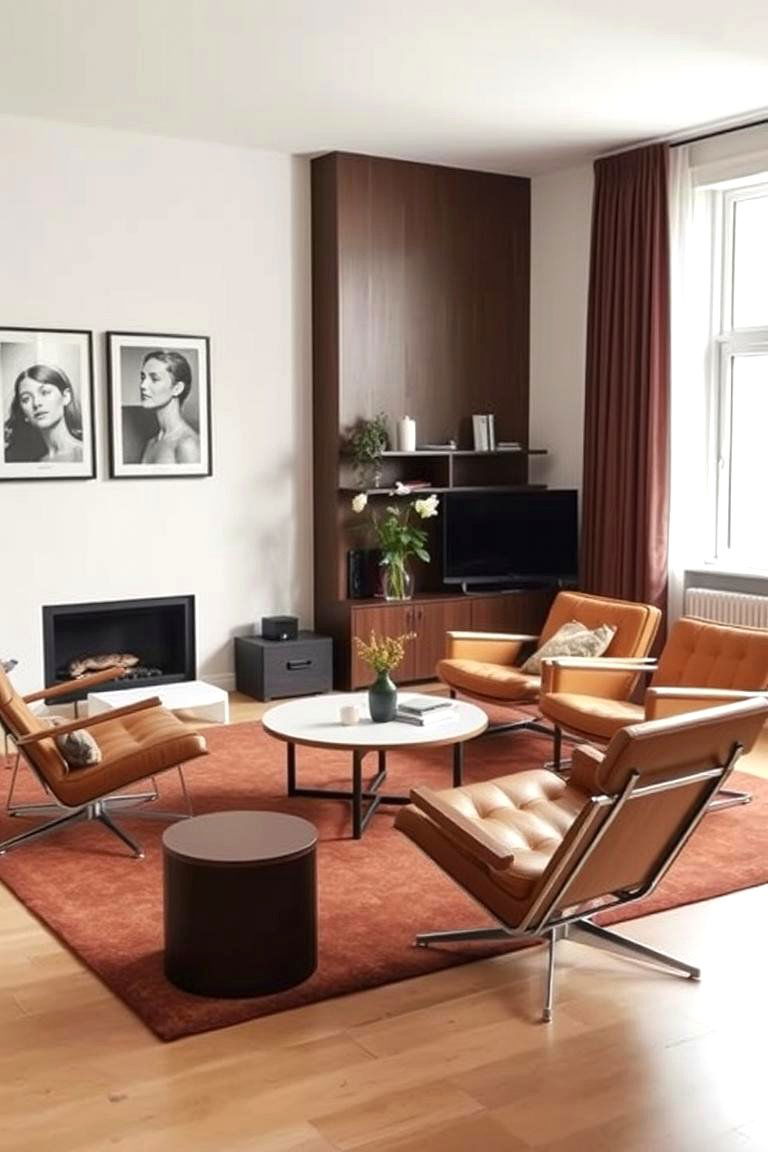
The furniture in Bauhaus interiors is designed with longevity in mind. Classic pieces, such as the Barcelona chair or the Wassily chair, showcase the functional beauty of Bauhaus design. These timeless designs have remained popular because of their simple yet elegant lines, and they serve as both functional seating and art pieces in your home.
Conclusion:
Bauhaus design focuses on clean lines, minimalist furniture, and a functional approach to aesthetics. Whether through bold geometric shapes, the use of primary colors, or the embrace of industrial materials, these ideas allow you to create a space that’s not only beautiful but practical. Embracing the Bauhaus philosophy in your home can help you achieve a timeless, modern interior that balances style with functionality. Ready to experiment with these ideas and transform your space with the elegance of Bauhaus design?



